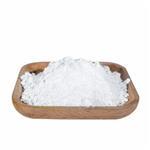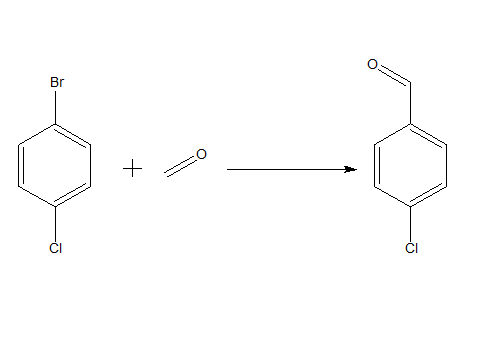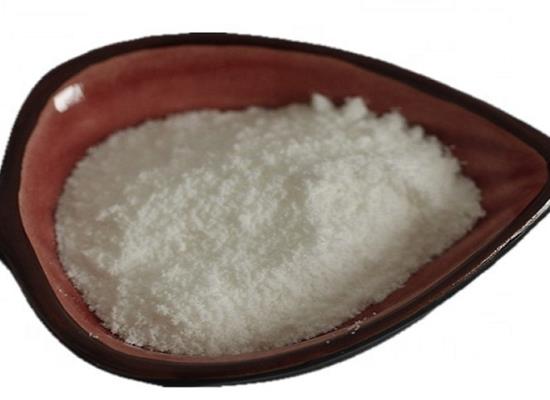4-Chlorobenzaldehyde: Applications in Medicinal Chemistry, Synthesis Method and Health Hazards
General Description
4-Chlorobenzaldehyde is a crucial compound in medicinal chemistry, facilitating the development of diverse pharmacological agents. Its application in synthesizing pyrazoline derivatives and dihydroquinolone derivatives showcases its role in creating molecules with anti-inflammatory, antimicrobial, and neuroprotective properties. Additionally, 4-Chlorobenzaldehyde contributes to the synthesis of enantiomerically pure substances, improving drug selectivity and potency. However, its handling requires caution due to various health hazards, including acute toxicity if swallowed, skin and eye irritation, and respiratory risks. Furthermore, its classification as toxic to aquatic life highlights the need for environmental protection measures. In summary, 4-Chlorobenzaldehyde's significance in medicinal chemistry is evident in its versatility for constructing potent therapeutic agents, despite the importance of stringent safety protocols in its handling and use to mitigate associated health risks.

Figure 1. 4-Chlorobenzaldehyde
Applications in Medicinal Chemistry
4-Chlorobenzaldehyde is a versatile compound that plays a critical role in the field of medicinal chemistry, particularly in the synthesis of compounds with potential therapeutic applications. As a building block, 4-Chlorobenzaldehyde is essential for the development of molecules that can interact with various biological targets. One significant application of 4-Chlorobenzaldehyde in medicinal chemistry is its role in the synthesis of pyrazoline derivatives, which are noted for their diverse pharmacological activities. These activities include anti-inflammatory, analgesic, antimicrobial, and anticancer properties. By incorporating 4-Chlorobenzaldehyde into the molecular structure, researchers can enhance the electron-withdrawing capability of the benzene ring, which is crucial for increasing the reactivity of the molecule towards nucleophilic attack, thereby facilitating the formation of more complex structures. Moreover, 4-Chlorobenzaldehyde has been used in the synthesis of dihydroquinolone derivatives, which function as negative allosteric modulators of the NMDA receptor. These compounds show strong selectivity for GluN2C- and GluN2D-containing receptors, which are important in neurological pathways associated with diseases like Alzheimer's and Parkinson's. By altering the interaction dynamics of these receptors, 4-Chlorobenzaldehyde-based compounds could offer new avenues for therapeutic intervention against these neurodegenerative conditions. Additionally, 4-Chlorobenzaldehyde contributes to the development of enantiomerically pure substances, enhancing the selectivity and potency of medicinal compounds. This selectivity is crucial for reducing side effects and improving the efficacy of drugs. The precise manipulation of 4-Chlorobenzaldehyde in synthesizing enantiomerically enriched compounds can lead to the development of more effective and safer pharmaceutical agents. In summary, 4-Chlorobenzaldehyde is a fundamental component in medicinal chemistry for constructing complex molecules that can serve as potent and selective modulators of biological functions. Its application ranges from enhancing pharmacological profiles to facilitating the synthesis of targeted therapies for various diseases, underscoring its indispensable role in drug development and therapeutic innovations. 1
Synthesis Method
The synthesis of 4-Chlorobenzaldehyde involves the oxidation of secondary aryl amines using the reagent IBX. This method showcases the conversion of amines into aldehydes, demonstrating a sophisticated approach to organic synthesis. Starting with 4-Chloro-N-methylbenzenemethanamine, the process entails heating N-(4-chlorophenyl)-N-methylamine in chloroform with IBX under reflux conditions. A mixture of 70 mg of N-(4-chlorophenyl)-N-methylamine and 252 mg of IBX in 10 mL of chloroform is refluxed with stirring for 4 hours to enable amine oxidation. Subsequently, the mixture is filtered, and the filtrate is washed with sodium hydroxide, hydrochloric acid, and water to eliminate impurities. Drying with magnesium sulfate follows to remove any moisture. Finally, chloroform is evaporated under vacuum to obtain 4-Chlorobenzaldehyde as the product. This synthesis route is favored for its simplicity and high yield of 100%. The choice of reagents emphasizes the impact of electronic and steric factors on oxidation efficiency. IBX stands out as an efficient oxidizing agent, ensuring the precise conversion of secondary aryl amines to their aldehyde counterparts with exceptional selectivity and yield. Such strategic methods underscore the significance of tailoring oxidative conditions to the structural characteristics of the substrate. 2
Health Hazards
4-Chlorobenzaldehyde presents several health hazards that require careful management to ensure safety in its handling and use. As a chemical compound, 4-Chlorobenzaldehyde has been classified with multiple hazard statements under the Globally Harmonized System (GHS), highlighting its potential risks to human health and the environment. Firstly, 4-Chlorobenzaldehyde is categorized as Acute Tox. 4, indicating that it is harmful if swallowed. This risk emphasizes the need for precautions to prevent ingestion, which could result in acute toxicity. The symptoms might include gastrointestinal distress, such as nausea, vomiting, and abdominal pain, necessitating immediate medical attention. Additionally, 4-Chlorobenzaldehyde is known to cause skin irritation (Skin Irrit. 2) and may also trigger allergic skin reactions (Skin Sens. 1). These properties suggest that direct contact with the skin can lead to dermatitis, redness, and itching. Such reactions might not only be discomforting but could escalate to more severe allergic responses, making protective measures like gloves and appropriate clothing essential. The compound also poses serious risks to the eyes, as indicated by its classification under Eye Irrit. 2A. Exposure to 4-Chlorobenzaldehyde can cause serious eye irritation, potentially resulting in pain, redness, and vision impairment if not managed swiftly with thorough eye washing and medical evaluation. Moreover, 4-Chlorobenzaldehyde is noted for potentially causing respiratory irritation (STOT SE 3), signifying that inhalation could lead to respiratory discomfort, coughing, or more severe respiratory issues. Adequate ventilation and respiratory protection are recommended to mitigate these risks. Lastly, 4-Chlorobenzaldehyde has significant environmental implications, being classified as toxic to aquatic life with long-lasting effects (Aquatic Chronic 2). This classification underscores the importance of preventing 4-Chlorobenzaldehyde from entering waterways, where it can have detrimental effects on aquatic organisms and ecosystems. In summary, 4-Chlorobenzaldehyde requires stringent safety protocols, including proper labeling, use of personal protective equipment, and measures to prevent environmental contamination to mitigate its various health hazards effectively. 3
Reference
1. Acker TM, Khatri A, Vance KM, et al. Structure-activity relationships and pharmacophore model of a noncompetitive pyrazoline containing class of GluN2C/GluN2D selective antagonists. J Med Chem. 2013; 56(16): 6434-6456.
2. Chen LX, Huang YH, Cong H, Tao Zhu. Functional group transformation from amines to aldehydes via IBX oxidation. Chemical Papers. 2018; 72(3): 661-667.
3. 4-Chlorobenzaldehyde. National Center for Biotechnology Information. 2024; PubChem Compound Summary for CID 7726.
Related articles And Qustion
Lastest Price from 4-Chlorobenzaldehyde manufacturers

US $1.00/g2025-04-21
- CAS:
- 104-88-1
- Min. Order:
- 1g
- Purity:
- 99%
- Supply Ability:
- 1000kg

US $10.00/KG2025-04-21
- CAS:
- 104-88-1
- Min. Order:
- 1KG
- Purity:
- 99%
- Supply Ability:
- 5tons



